JiuMenKou Great Wall
Suizhong Jiumenkou Great Wall is located in Xintaizi Village, Lijian Township, Suizhong County, Huludao City, Liaoning Province. It is 10 kilometers away from Shanhaiguan District, Qinhuangdao City, 20 kilometers away from Qinhuangdao City, with a total length of 1704 meters.
The southern end of the city rises between dangerous peaks and cliffs, and connects with the Great Wall from the direction of Shanhaiguan Customs. Since then, the Great Wall stretches northward along the ridge to the South Bank of the local Jiujiang River. On the Jiujiang River with a width of up to 100 meters, it has built a huge bridge across the river city, thus continuing to move northward between the mountains. "The city walks on the water, and the water flows in the city." It is people's description of the image of the Great Wall at JiuMen
Construction history
Jiumenkou, known as a piece of stone in ancient times, was the main road between Beijing and Fengfeng before the Ming Dynasty. In the fourteenth year (1381) of Hongwu, Taizu (Zhu Yuanzhang) of the Ming Dynasty, General Xu Da presided over the construction of the Great Wall of Jizhen. After the Great Wall was built, a stone gate was replaced by the Nine Gates Gate Gate Gate, which became an important gateway for traffic inside and outside the Gate. In 1644, Li Zicheng, the leader of the peasant rebellion army in the late Ming Dynasty, and the Qing soldiers quoted by Wu Sangui launched a famous "stone battle" here. From 1922 to 1924, the two warlords of Zhifeng fought here. During the War of Liberation, the People's Liberation Army also fought fiercely in the Jiumen Valley. Anecdotes of ancient and modern battlefields make the Great Wall at JiuMen more famous. National key cultural relics protection units. In November 2002, China's only water Great Wall, Liaoning Jiumen Great Wall, passed the acceptance of UNESCO and was officially listed as a part of the Great Wall as a world cultural heritage.
The bridge over Jiujiang River has its own characteristics. On the 100-meter wide river course, eight shuttle piers are wrapped with huge stones to form nine gates. The upper part of the bridge is a high wall, just like other walls of the Great Wall. The wide riverbed under the bridge of JiuMen Great Wall is paved with rectangular large stones, and the stones are bitten by iron waist to form a regular stone bed, which looks like a piece of stone, so the Great Wall of JiuMen is also called "a piece of stone pass". Local people have come to describe the dangerous terrain here, easy to defend and difficult to attack -- "ten doors less than one, the door breaks the soul, to think of a door, nine people die the soul".
Document record
According to documents, the Great Wall of Jiumen was built in the Northern Qi Dynasty (479-502 A.D.), and the existing Great Wall of Jiumen was built in the 14th year of Hongwu in Ming Dynasty (1381 A.D.), and has been repaired many times since then. Archaeological excavations in the early 1990s unearthed a large number of cultural relics such as iron artillery, stone artillery, blue and white porcelain bowls, vats and so on, reflecting the military defense situation of the Ming Dynasty and the life of soldiers stationed on the Great Wall. According to local cultural relics department researchers, the Great Wall at JiuMen has a strict military defense system, known in history as "the first pass in Beijing and East", is a place for military strategists to compete. At the end of Ming Dynasty, Li Zicheng defeated Wu Sangui when he was attacked by Qing soldiers.
Main attractions
A Stone War
A piece of stone (now Jiumen) is one of the most important passes of the Great Wall of the Ming Dynasty, located at the boundary between Liaoning and Hebei Province, known as "the first pass in the east of Beijing". On April 13, 1644, 17th year of Chongzhen, Li Zicheng and Liu Zongmin personally led the army to Shanhaiguan Customs. Following were Prince Zhu Cifan of the Ming Dynasty and Wu Jian, father of Wu Sangui. On April 20, the Qing troops arrived in Lianshan (Jinxi today). Wu Sangui urged them again and again. The Qing troops rushed day and night. On April 21, Li Zicheng's Dashun Army fought fiercely with Wu Sangui in a single stone. Dashun Army went to Shanhaiguan about 100,000 soldiers and horses; Wu Sangui and Gaodi Guan and Liao soldiers about 50,000; Dolphin commanded about 78,000 troops of Manchu, Mongolia and Han. Among them, Dolphin commanded the strongest Manchu iron cavalry. The soldiers and horses were all in armour, very hard, and could not be pierced beyond a hundred feet. In the early morning of the same day, the Qing army marched only two miles from Shanhaiguan City, and Dorfan watched the battle on Weiyuan platform in Huanxiling Mountains. On the morning of the 22nd, Wu Sangui Army was increasingly difficult to support. A Wu Army guarding the northern wing surrendered to Dashun Army. Wu Sangui, please descend to Dolphin. Dolphin ordered Wu Sangui to shave her hair according to Manchu customs. He promised to marry Princess Wu Yingxiong, the Emperor Taiji, to Wu Zi. Dolphin ordered the Qing Army to enter the customs from Nanshuimen, Beishuimen and Guanzhong Gate.
After the Qing troops entered the Customs, they saw the Dashun Army lined up in a long serpent array from Beishan to the seaside. Dolphin ordered the Qing Army lined up in scale along the coast, and Wu Sangui Army lined up on the right side of the Qing Army. Suddenly, the wind rose and the dust covered the sky. Dolphin took the eight-flag cavalry to charge and fall into the battle. Although Dashun Army fought hard to resist, it had fought with Wu Sangui Army day and night. It was exhausted. The Qing Army was equal to waiting for work with ease. Li Zicheng's Dashun Army was defeated, Liu Zongmin was injured and tens of thousands of peasant soldiers were killed. Since Li founded Ma Xiaogangfu to supervise the battle, seeing that the defeat had been decided, he ordered the withdrawal. On the same day, Dolphin named Wu Sangui king of Pingxi and ordered him to be the forerunner and pursue all the way to the capital. Li Zicheng was defeated. In a rage, Ma Qian killed Wu Xiang, hung his head on a high pole to show off, and killed 38 people of the Wu family after returning to the capital. On April 29, Li Zicheng declared himself Emperor in Beijing. The next day, Li Zicheng left Beijing and retreated to Xi'an. It's only forty-two days.
Ming Great Wall Tunnel
Before the Ming Dynasty, a piece of stone was an important transportation road between Beijing and Qin Dynasty. In the thirteenth year of Hongwu Ming Dynasty, Xu Da, a famous general, ordered to build the Great Wall at Jiumen Section. After the completion of the project, General Xu Da and designers designed and excavated a school military field inside the Great Wall according to the dangerous location of Jiumen Section. Without passing through the Jiumen Secret Pass, they secretly opened the mountain underground road outside the Pass. The underground road situated in the mountain body under the Great Wall is 1027 meters long.
There are two exits and one entrance in the tunnel. One outlet is directly opposite to the other, and the other is a stone battlefield. There are 29 caves in the cave, including bell room, toilet (thatched house), confinement room, Chinese army room, water jail, grain depot, gang room, water well room, milling room, weapon room, training room, artillery room, torture exhibition room, garrison room, Buddhist room, Guangong and mountain god worship room. In the cave, soldiers can be stationed and enemies can be attacked by unexpected soldiers in the inner city. In the rear, such as Shenbing Heavenly Drop, about 2,000 people can be stationed in the underground tunnel. Drainage system and ventilation holes are designed to ensure the freedom of movement of soldiers stationed in the cave. The water wells in the cave are clear and the water quality is sweet and clear, which can be used for drinking by more than 2,000 people.
In 1644, after Li Zicheng's peasant revolutionary army captured Beijing, it made a long-distance attack on Shanhaiguan Customs. Firstly, it occupied Jiumen Chengguan in the interior, and Wu Sangui led Dole Rongqing Army to overthrow it for a long time outside the border. He seized a former Ming Dynasty city guard and explored the location of the secret passage. Then he sent the odd soldiers directly into the city from the outside of the secret passage, forming a situation of internal and external collision, which eventually led to the defeat of the long-distance peasant army. This was the famous "One Stone War" in history, and finally ended with the victory of the Qing Army. The ancient underpass of the Great Wall has now been designated as a tourist attraction. After you have visited the Great Wall, it will be interesting to visit the Great Wall Tunnel, which is called "City in the City".
Rare Bird Sightseeing Park
Jiumenkou Precious Bird Sightseeing Park is located in the Great Wall Scenic Area of Jiumenkou. It covers an area of 63000 square meters, with a net cover area of 48300 square meters and a sightseeing park.
It is divided into three zones: waterfowl zone, bird zone and natural zone. It contains more than 200 species of rare birds and animals all over the world. This garden is enough to show all kinds of rare birds as the main garden sightseeing garden. It shows the natural landscape of birds in gardens, people entering gardens and people and birds dissolving into one. Visitors can enjoy the free flight of rare birds, the integration of human and bird, and the coexistence of human and bird gardens. Let visitors enjoy the happy home of harmony between man and nature.
Local specialty
1 Red Cliff Peanut
Impurity is 0, water is 8.5%, no Aspergillus flavus.
2 jellyfish
Jellyfish is a specialty of Huludao Port.
3 Huludao shrimp skin
Huludao Longgang District Huludao Port prawn fishing time is longer.
4 Suizhong Grass Editing
Suizhong County has a long history of grass weaving industry and enjoys a good reputation at home and abroad.
5 Banshigou jujube
Banshigou Village, located at the north foot of Xiaohongluo Shandong Province, Huludao City, is famous for its abundant jujube.
6 Suizhong White Pear
White pear is a special product of Suizhong, which has a long history of cultivation, high yield and good quality, and is well-known throughout the country.
7 Suizhong Kiwifruit
Kiwifruit is the fruit of wild deciduous vine fruit trees in the mountainous areas of the north-west of Suizhou, and it is a precious local product.
General knowledge of Tourism
Mountaineering equipment
1. It is not suitable to wear leather shoes, new shoes, high-heeled shoes and sandals for mountain climbing. These shoes are not suitable for long, uneven roads and slippery roads. Moreover, the sole of the foot is easy to blister and the skin of the foot is easy to be injured. What is really suitable for climbing is lighter sneakers, tourist shoes and rubber sole shoes.
2. Middle-aged and old people climbing mountains should prepare a walking stick (not to be taken from home, but found under the mountain). It will be helpful when walking on the mountain.
3. The temperature on the mountain varies greatly and the mountain wind is strong. Therefore, we should take enough clothes when we go up the mountain. Although the sun is burning down the mountain, we must also take windbreakers or thin sweaters. Rainfall is also essential in southern mountainous areas where it is sunny and rainy.
4. Wear thick socks without blisters.
5. Take some trauma medicine, such as Band-Aid, Purple Drug, etc. Snake medicine is also needed in the season when snakes and insects infest.
Baggage List for Parade
The principle of packing is to minimize luggage, pack as small as possible, and leave room for souvenirs and gifts purchased during the journey. There are three tips for packing baggage:
1. Uncommonly used, bigger and heavier items should be loaded first to facilitate handling.
2. Bottled cosmetics and other fragile things, wrapped in T-shirts or towels.
3. Fill the baggage gap with a rolled towel.
The Nine Gates Great Wall, named for its nine Xieshui Gates under the bridge, flows from west to East into the Bohai Sea. It is magnificent and magnificent. It is a perfect combination of natural and human landscapes. It enjoys the reputation of "the Great Wall on Water", which was awarded the World Cultural Heritage by UNESCO in 2002.
Packing your luggage is a headache. If you make a list of what you need and write down what you need, you won't miss one thing or the other. This list should include the following four categories:
(1) Documents: tickets, passports, identity cards, marriage certificates, letters of introduction, guidebooks, maps, travel schedules, address telephone address books;
(2) Small appliances: mobile phone pager, camera, film, walkman, Travel Alarm clock, flashlight, shaver, calculator, battery, nail knife, can opener, small electric cup, small clothes rack, sewing bag, hairdryer, pen and paper;
(3) Wear categories: change clothes, change shoes, pajamas, tie scarves, hats, gloves, swimsuits, shorts, physiological supplies (eyes, etc.), towels, cosmetics, sunscreen, sunglasses, accessories, bath supplies, combs, toothbrushes and toothpaste;
(4) Diet: necessary medicines, beverages, food
The above items are all-round, and can be deleted according to their own circumstances. If you live in a hotel, you don't need bath products.
Guide to Photographic Equipment in Tourism
If you want to be a solo traveler, you should arrange the travel routes according to the time, determine which scenic spots are representative and must be visited, and which are secondary and can not be visited. If you are traveling with a group, you should know clearly in advance the route of the group and the scenic spots you want to visit, so that you can take pictures in a leisurely manner. Choose appropriate photographic equipment.
There are mostly two types of tourism photography: one is to take photographs as a memorial of the "visit here", with records as the main; the other is to take photographs as the other eye of tourism discovery, with creativity as the main. If you belong to the former, then a well-functioning "fool" camera or a universal camera with fixed lenses is enough.
But if you are an amateur photographer, the following equipment may be necessary: one or two SLR fuselages with good performance, so that you can shoot with both films at the same time. Two lenses with different focal lengths (including 28 mm wide angle and 200 mm medium and long focal length). Others such as flashlights, shades, filters, balloon brushes, spare batteries and notepads are also essential. Film should be as full as possible, because the film sold in tourist attractions is not only expensive, but also difficult to guarantee the quality. Many photography enthusiasts like to carry a heavy tripod. In fact, there are not many opportunities for tripod to be used in tourism.
There are two reasons: first, in the peak season of tourism, scenic spots are overcrowded, and the time schedule is very compact, there is not enough time and space to play the advantages of tripod. 2. In many cases, tripods are not suitable for use, such as on hillsides, on water or in the middle of the road. At this time, tripods can only become a burden and a burden.
By contrast, a single-legged frame is much lighter and more practical, but most people do not have a single-legged frame. According to my experience, it is a simple one-legged stand to take only one miniature tripod forceps and pay a few yuan for the cheapest crutch when you go to the scenic spot and fix the tripod on the handle of the crutch. To use the crutches against the ground, rocks or other objects, you can shoot smoothly. Moreover, all equipment should be operated in accordance with the procedures before departure to ensure that they can function properly.
According to the subject matter and theme shooting, everything on the journey is a brand new world for you, can make you have the impulse to shoot, natural scenery, places of interest, folk customs, etc. Before shooting, we should classify the subject matter, and then choose the best angle according to our previous understanding and feeling at that time. Filming should be focused and thematic, which can not only reflect the style of people and things, but also express their subjective feelings.
For what you think is important, you might as well shoot several more films from different angles or according to different combinations of cameras, which seems to waste the film, but the probability of success is greatly increased, so as to avoid a "lost" hand and eternal hatred.
When shooting, we should take notes of the scenes and feelings when shooting, so that when we get home, we can add vivid words and pictures to these pictures, and the meaning of this trip has been sublimated.
Traffic information
1. Bus routes: The Great Wall at JiuMen is 10 kilometers away from Shanhaiguan. There are buses for JiuMen in Shanhaiguan in summer tourist season.
2. Self-driving route: from Suizhong County to Shangjing-Shenzhen Expressway, under the Great Wall/Jieshi at JiuMen, through 102 National Highway and Jiujie Line.
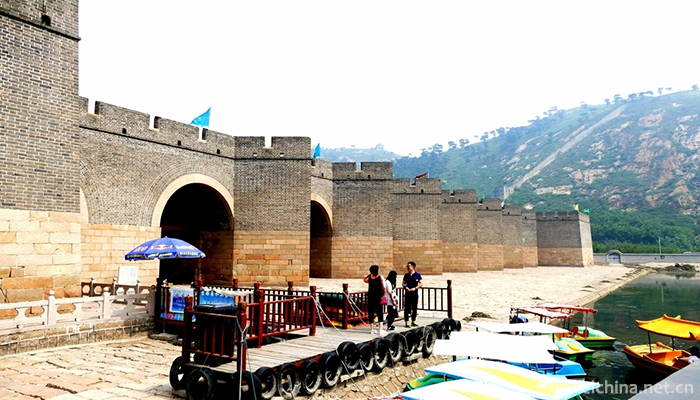
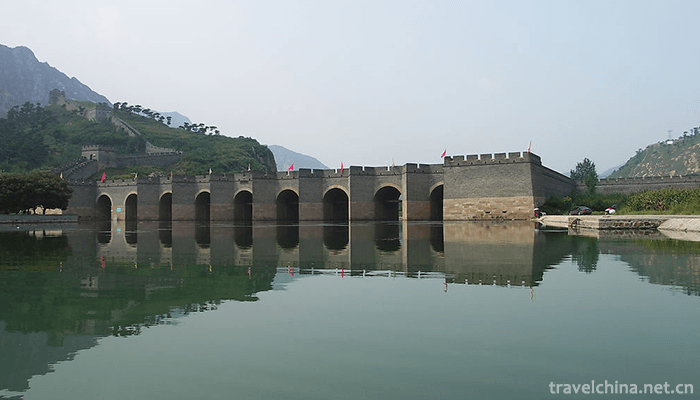
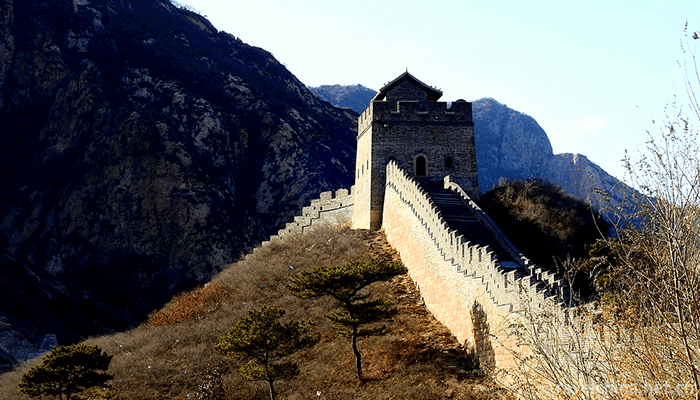
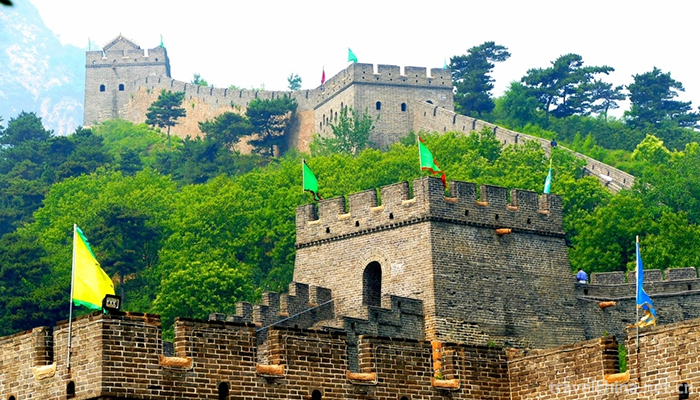
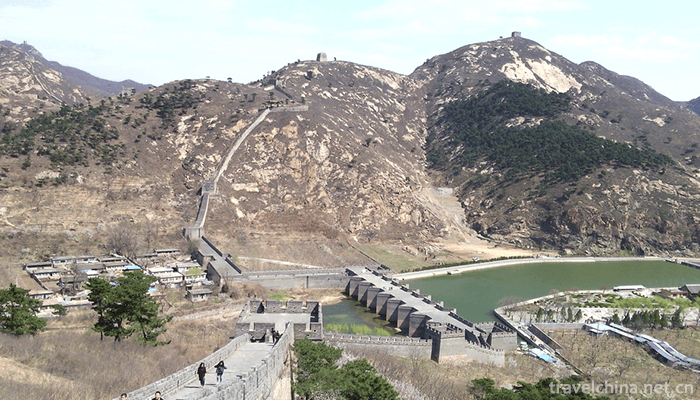
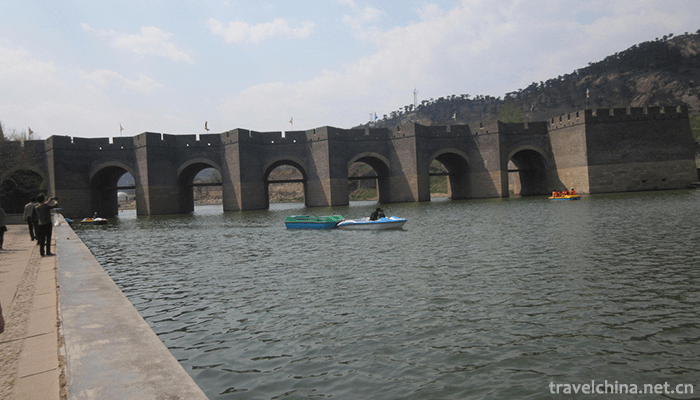
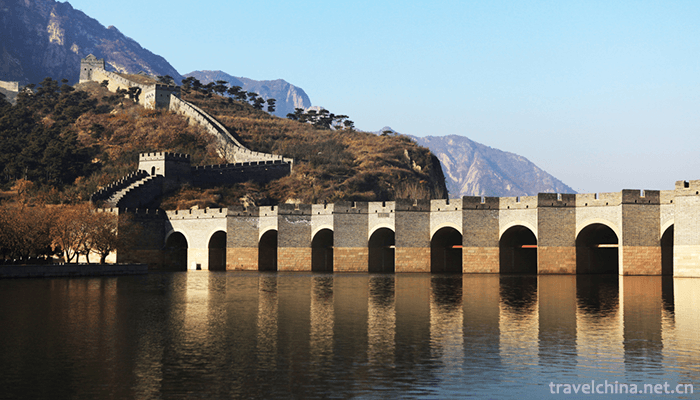
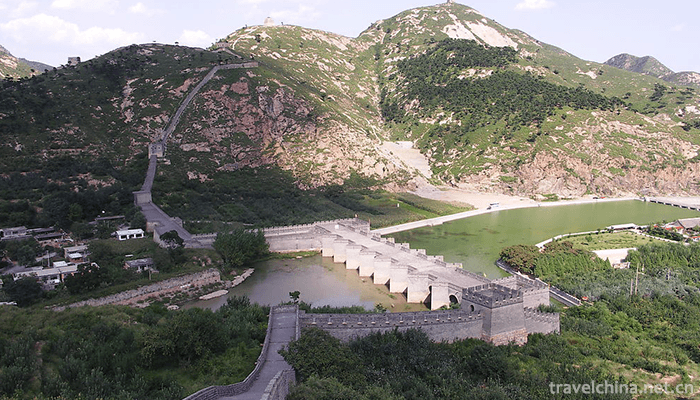
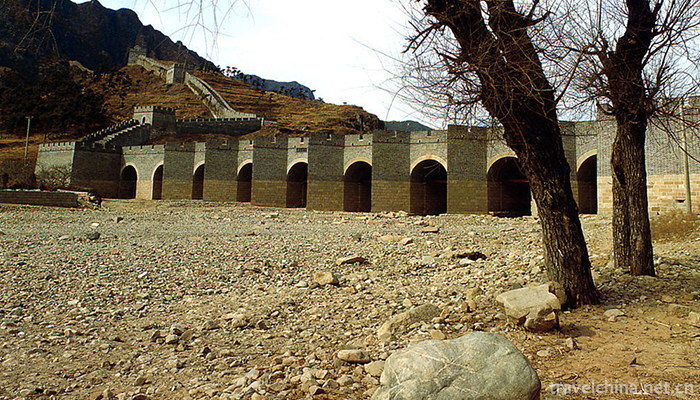
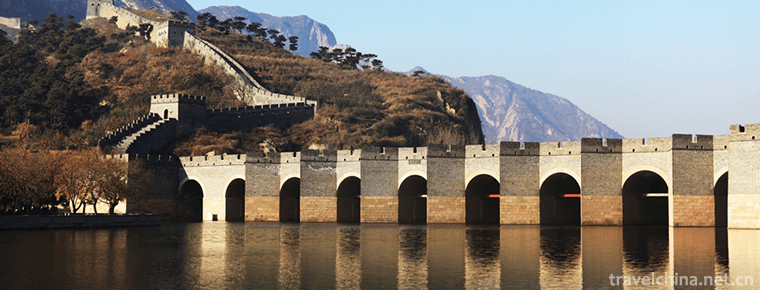
-
1.The Oriental Pearl Radio & TV Tower
The Oriental Pearl Radio and Television Tower is one of the landmark cultural landscapes in Shanghai. It is located in Lujiazui, Pudong New Area, with a height of 468 meters
Time 2018-12-05 -
2.Mupa Mipa
Mupa Mipa, a local traditional folk literature in Simao City, Yunnan Province, is one of the national intangible cultural heritage.
Time 2018-12-15 -
3.Beijing Hangzhou Grand Canal
Beijing-Hangzhou Grand Canal is the longest and largest ancient canal in the world. It is also one of the oldest canals. It is called three great projects in ancient China together with the Great Wall
Time 2018-12-22 -
4.Nanzhao Custom Island Dali
Nanzhao Custom Island in Dali is one of the three islands in Erhai Lake, located in Shuanglang Township at the southeast end of Eryuan County, the golden section of Cang Er National Scenic Area
Time 2019-01-06 -
5.Blue Moon Bay Hot Spring Resort
Lanyuewan Hot Spring Resort is the largest four-star garden-style foreign-related hotel and national AAAA-level tourist scenic spot in Western Guangdong. It is located in the quiet "Guangzhou Bay
Time 2019-01-29 -
6.Tibetan costume
Tibetan costumes Tibetan men's clothes are divided into three categories: labor dress, superfluous dress and warrior dress. Women's clothes change greatly in festivals, major events in life and etique
Time 2019-04-05 -
7.Ha Ni Ha Ba
Ha Ni Ha Ba, an important part of Chinese Hani folk literature. Hani Haba, which means Hani ancient songs, is a popular and far-reaching folk song in Hani social life.
Time 2019-05-02 -
8.Flower Drum Opera
Huagu opera, a kind of local opera in China, has the most identical names in the national local opera, usually referring to Hunan Huagu opera. Hubei, Anhui, Jiangxi, Henan, Shaanxi and other
Time 2019-05-04 -
9.Dragon boat Racing
Dragon boat racing is one of the customs of the Dragon Boat Festival in China, and it is also one of the most important festival folk activities of the Dragon Boat Festival. It is common in southern C
Time 2019-06-12 -
10.Yigou gou
"Yigou" is a traditional drama in Gaotang area of Shandong Province and one of the national intangible cultural heritages.
Time 2019-07-12 -
11.Yongchun Quan
Yongchun Quan is a traditional Chinese martial arts, a technology to stop invasion, a positive, streamlined and legitimate defense system, and the legal use of force. Compared with other traditional C
Time 2019-07-14 -
12.Beijing Police College
Beijing Police College is a full-time general undergraduate college approved by the Ministry of Education, sponsored by the Beijing Municipal People's Government, administered by the Beijing Public Se
Time 2019-09-06